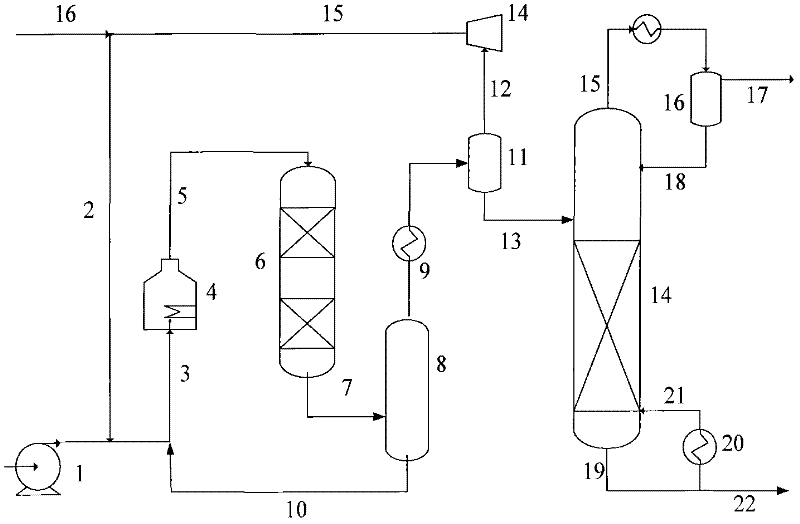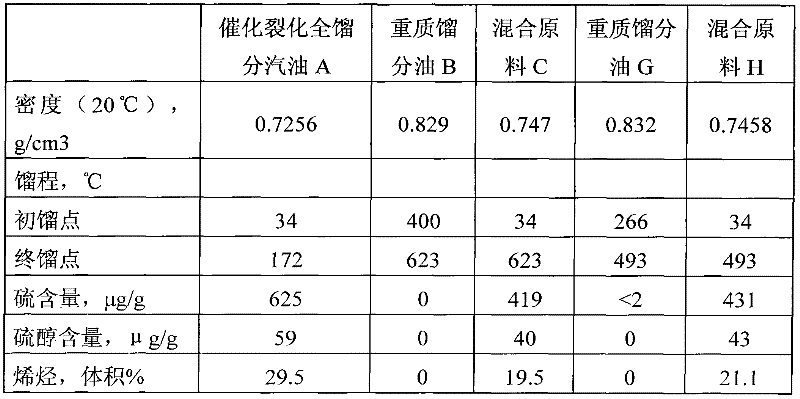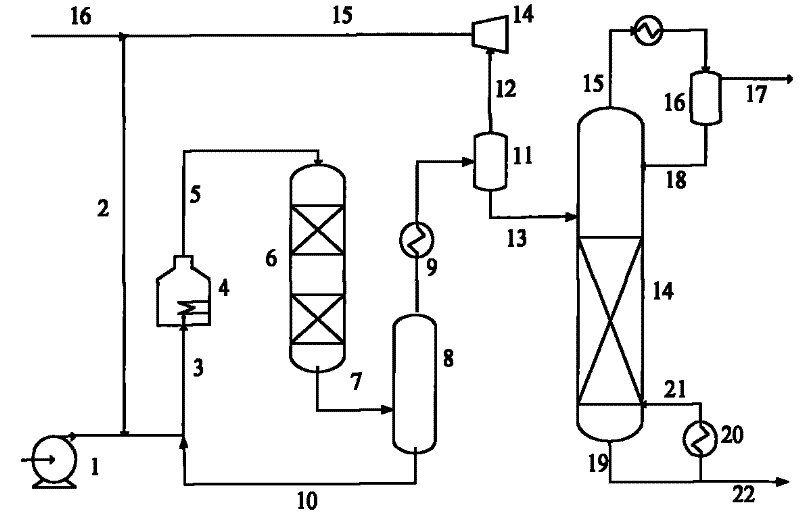Method for producing low-sulfur gasoline
A technology for gasoline and gasoline fractions, which is applied in the petroleum industry, hydrocarbon oil treatment, hydrotreating process, etc., and can solve problems such as loss of octane number of products
- Summary
- Abstract
- Description
- Claims
- Application Information
AI Technical Summary
Problems solved by technology
Method used
Image
Examples
Embodiment 1
[0046] Produce low-sulfur gasoline according to the process shown in Figure 1.
[0047] The gasoline stock oil feed is mixed stock C, its properties are listed in Table 1, catalyst A is RSE-1, and catalyst B is RSS-1.
[0048] The primary desulfurization reaction conditions are: reaction temperature is 270°C, reaction pressure is 1.6MPa, gasoline feed volume space velocity is 4h -1 , gasoline feed hydrogen oil volume ratio is 400. The properties of the gasoline fraction after hydrodesulfurization are listed in Table 2.
[0049] The secondary desulfurization reaction conditions are: the pressure is 1.3MPa, the average temperature of the catalyst bed below the feed is 220°C, and the mass space velocity of the feed is 3h -1 , The volume ratio of steam (inert gas) to raw oil is 7. The properties of the gasoline products are listed in Table 3.
Embodiment 2
[0051] Produce low-sulfur gasoline according to the process shown in Figure 1.
[0052] The gasoline stock oil feed is mixed raw material H, and its properties are listed in Table 1. Catalyst A is RSE-1, and catalyst B is RSS-1.
[0053] The primary desulfurization reaction conditions are: reaction temperature is 270°C, reaction pressure is 1.6MPa, gasoline feed volume space velocity is 4h -1 , gasoline feed hydrogen oil volume ratio is 400. The properties of the gasoline fraction after hydrodesulfurization are listed in Table 2.
[0054] The secondary desulfurization reaction conditions are: the pressure is 1.3MPa, the average temperature of the catalyst bed below the feed is 220°C, and the mass space velocity of the feed is 3h -1 , The volume ratio of steam (inert gas) to raw oil is 7. The properties of the gasoline products are listed in Table 3.
Embodiment 3
[0056] In the process shown in Figure 1, the flash tower 8 is omitted, and low-sulfur gasoline is produced according to this process.
[0057] The gasoline raw material oil feed is catalytic cracking full distillate gasoline A, its properties are listed in Table 1, the catalyst A is RSE-1, and the catalyst B is RSS-1.
[0058] The primary desulfurization reaction conditions are: reaction temperature is 270°C, reaction pressure is 1.6MPa, gasoline feed volume space velocity is 4h -1 , gasoline feed hydrogen oil volume ratio is 400. The properties of the gasoline fraction after hydrodesulfurization are listed in Table 2.
[0059] The secondary desulfurization reaction conditions are: the pressure is 1.3MPa, the average temperature of the catalyst bed below the feed is 220°C, and the mass space velocity of the feed is 3h -1 , The volume ratio of steam (inert gas) to raw oil is 7. The properties of the gasoline products are listed in Table 3.
PUM
 Login to View More
Login to View More Abstract
Description
Claims
Application Information
 Login to View More
Login to View More - R&D
- Intellectual Property
- Life Sciences
- Materials
- Tech Scout
- Unparalleled Data Quality
- Higher Quality Content
- 60% Fewer Hallucinations
Browse by: Latest US Patents, China's latest patents, Technical Efficacy Thesaurus, Application Domain, Technology Topic, Popular Technical Reports.
© 2025 PatSnap. All rights reserved.Legal|Privacy policy|Modern Slavery Act Transparency Statement|Sitemap|About US| Contact US: help@patsnap.com



